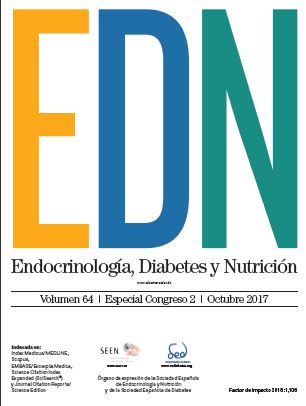1 - SEXUAL DIMORPHISM IN TYPE 2 DIABETES: A KEY ROLE OF ADIPOSE TISSUE
aInstituto de Investigaciones Biomédicas Alberto Sols (IIBM). Consejo Superior de Investigaciones Científicas y Universidad Autónoma de Madrid (CSIC-UAM). Madrid. España. bLaboratorio de Proteómica Cardiovascular. Centro Nacional de Investigaciones Cardiovasculares (CNIC). Madrid. España. cServicio de Endocrinología; fServicio de Cirugía. Hospital Clínico San Carlos (IDISSC). Madrid. España. dServicio de Endocrinología y Nutrición; eServicio de Cirugía. Hospital General Universitario Gregorio Marañón (IISGM). Madrid. España.
Introduction: The prevalence of type 2 diabetes (T2DM) is rising globally, due to, among other factors, obesity, physical inactivity, and aging superimposed on a genetic predisposition. The NIH recently highlighted the importance of sexual dimorphism and dictated inclusion of both sexes in clinical trials and basic research. Despite gender differences in adipose tissue distribution have been well-established very few studies have addressed the influence of sex on adipose tissue proteome, especially in the context of obesity-associated T2DM.
Objectives: In this work, we have aimed to better understand how adipose tissue proteome differs by sex and consequently the metabolic processes ending in T2DM in obese patients according to gender.
Methods: VAT samples were collected from morbidly obese following bariatric surgery. Proteomic differences between women and men suffering T2DM were assessed following a high-throughput approach encompassing isobaric labelling (iTRAQ) and high-performance liquid chromatography (HPLC) together with Systems Biology analyses.
Results: We have uncovered that the gender-specific hallmarks in diabetic patients were mainly related to the antioxidant machinery, the immune response and the adipose tissue morphology. Our data has also highlighted that in women, compared to men, there is a worsening of the obese phenotype once T2DM emerges mostly due to increased pro-inflammatory state and adipocyte hypertrophy. Additionally, computational modelling based on artificial intelligence and pattern recognition techniques pointed out a set of pathways that could be differentially targeted in T2DM patients according to gender.
Conclusions The identification of new gender-matched targets in T2DM may enable clinicians to direct and personalize a better management of the therapeutic approaches based on gender in these patients.
Acknowledgments: This work was supported by Grant SAF-2012-33014 (MINECO) (to BP) and a fellowship from FPI-UAM Program (to MG-S). We also acknowledge all patients included in this study.







